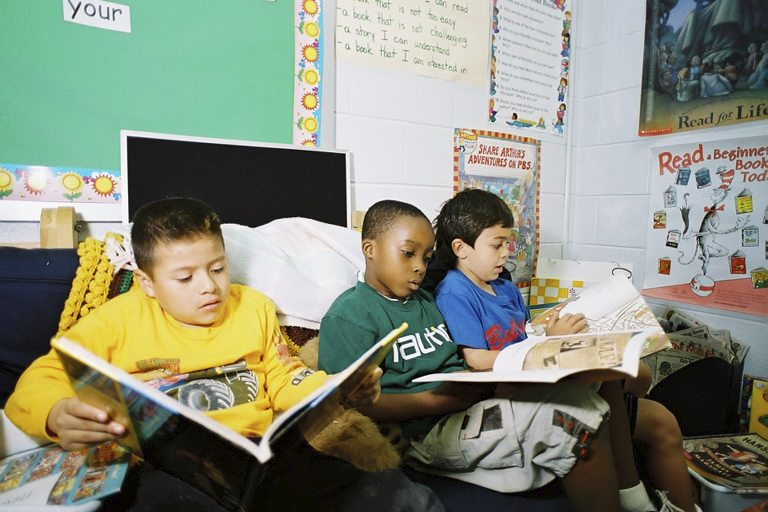5.1 Chapter Overview and Learning Objectives
5.1.1 Learning Objectives
After reading this chapter, students will be able to do the following:
- Critique the concept of intelligence quotient.
- Compare and contrast early biological theories that align with early psychological theories.
- Explain the arguments regarding early claims of links between race and crime.
- Analyze the influence of environmental and familial factors on crime.
- Discuss the importance of basic needs being met as it relates to crime.
- Consider the proposed existence of good and evil in everyone.
5.1.2 True Crime Stories: Overrepresentation of BIPOC Youth with Disabilities in the Juvenile Justice System

Figure 5.1 Picture of primary school children in a classroom.
In 2018 in Texas, a 10 years old boy with autism was pinned down and cuffed for being disruptive and swinging a computer mouse near other students. In 2021 in Colorado, an 11 year old Hispanic boy with autism was cuffed and dragged from the school to be thrown into the back of a police car where he was left for hours for poking another student with a pencil. In 2021 in Maryland, an officer handcuffed and screamed at a 5 year old African American boy for wandering away from his kindergarten class. In 2022 in North Carolina, a police officer pinned down a 7 year old boy with autism for 38 minutes, with a knee on the boy’s neck while placing handcuffs on his tiny wrists. This boy was accused of spitting at a teacher. These are just a few of the many disturbing stories about youth with disabilities and youth of color being mistreated by those in positions of authority who are labeling them as criminals.
The juvenile justice system was designed to help kids living in neglectful and poor conditions. As it has grown over the years, it has gone from a system designed to get children off the streets and stop them from committing petty crimes to a system incarcerating startling numbers of kids with disabilities and racial minority youth. Studies show as high as 85% of incarcerated youth have disabilities and 70% are youth of color (National Council on Disability, 2015; Southern Coalition for Social Justice, 2014). This is a phenomenon seen previously in our nation’s history as well. As discussed in Chapter 3, the positive school of criminology blamed criminality on physical and mental characteristics or disabilities. Today, however, children with disabilities, especially if they are also of a racial minority, are being incarcerated for supposedly different reasons.
After the school shooting at Columbine High School in 1999, and continuing after more recent shootings like the one at Sandy Hook Elementary School in 2012, schools have instituted zero-tolerance policies and upped the presence of police (school resource officers) on campuses. The intent was to create a safer environment for all students but the unintended consequence is that school infractions have been criminalized. For example, behaviors such as disorderly conduct or anger control issues can be criminalized as assault. The instances that occur in the classroom or on school grounds can lead to arrest or detention by police officers. As a result, kids with disabilities and BIPOC youth have been swept up in a system of criminalization instead of protection. Even though their behavior may be caused by a disability and not actual defiance or dangerousness, it can be misunderstood and the child is treated like a threat.
This act of punishing children for having disabilities is not new. In fact, it is one in a long line of examples of trying to figure out what is “wrong” with people and what to do about it. Often, the answer has been to lock them away from the rest of society so they can no longer be a problem. This chapter will review some of the theories behind such actions.
5.1.3 Licenses and Attributions for Chapter Overview and Learning Objectives
“Chapter Overview and Learning Objectives” by Curt Sobolewski is licensed under CC BY 4.0.
Figure 5.1 Picture of primary school children in a classroom, US Department of Education, CC BY 2.0, via Wikimedia Commons.
